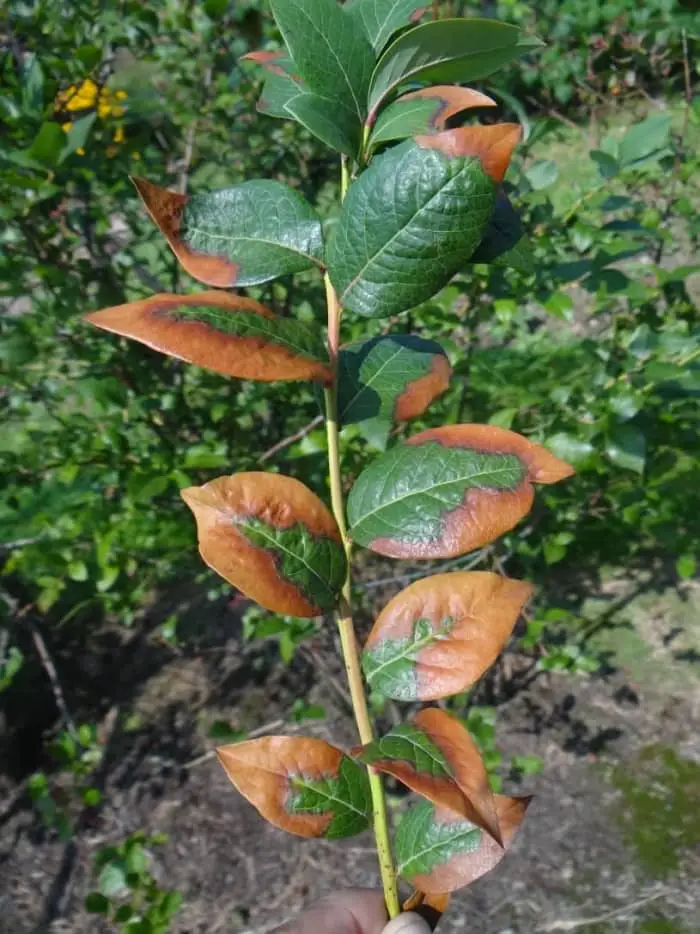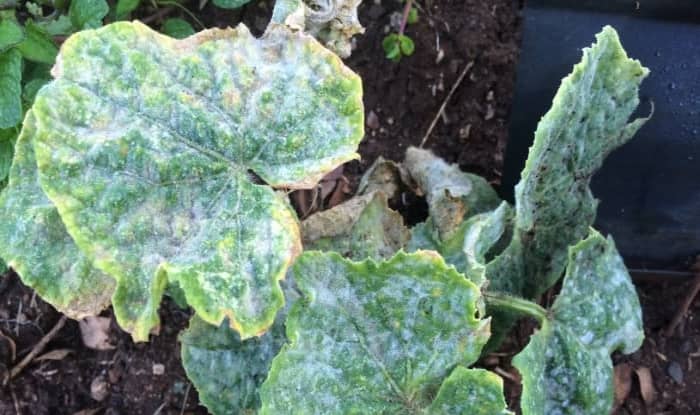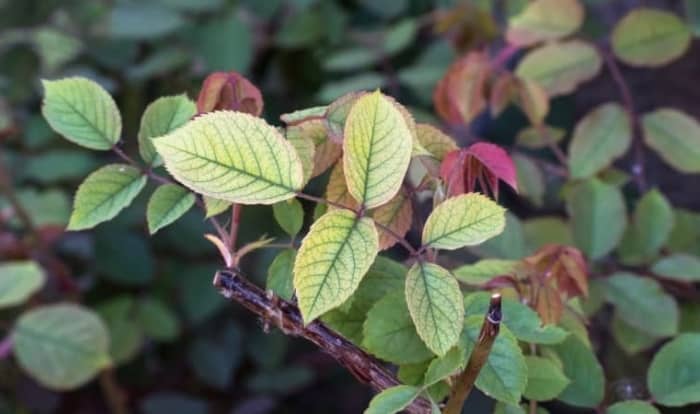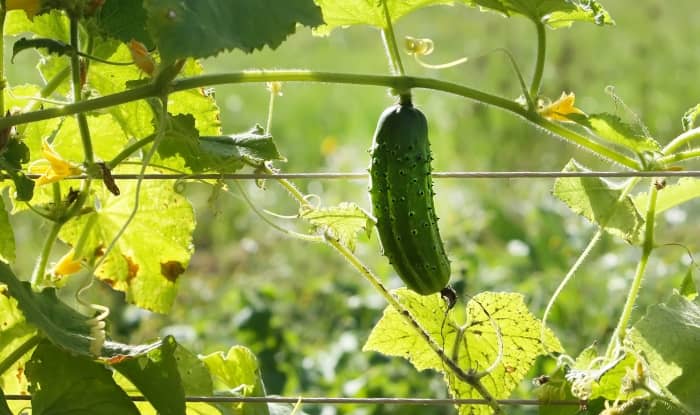If your cucumber leaves feel crispy then your plant has a problem. So it’s best not to ignore it.
There are many things that could be responsible. And it often requires looking for additional symptoms to make an accurate diagnosis.
So, to help you get to the bottom of it, let’s take a closer look at the most common causes and what you can do about it.
Crispy Cucumber Leaves: The Causes
If your cucumber leaves feel crispy it’s probably due to one of 5 things:
Too much water, iron deficiency, powdery mildew, leaf scorch, or the effects of transplanting.
Leaf Scorch

Blueberry leaf scorch caused by a virus Jerzy Opioła, CC BY-SA 4.0
Leaf scorch often occurs when the roots of the plant can’t uptake water and supply it to the leaves at a fast enough rate to replace that being lost by transpiration.
It usually happens during periods of hot, dry, and sunny weather, or windy conditions.
Other things that can cause it include bad soil conditions that restrict root growth, injury and disease that affect water uptake, and excessive use of fertilizer.
Symptoms include browning of the cucumber leaves from the edges. With the leaves feeling dry, brittle, and crispy.
In the more severe cases, the plants will lose their leaves.
Try to avoid planting in areas that are too exposed to the wind and sunlight. And make sure you’re watering regularly.
Too Much Water
Just as too little water can lead to crispy leaves, so can too much.
If you’re noticing crispy brown areas developing at the edges or tips of the leaves then it might be down to overwatering.
This is how it happens:
Normally, when your plant takes up water it’s passed from cell to cell in the leaves by osmosis until it reaches the cells at the outer edge, so they all get enough.
But if your plant is taking up too much water, then when it reaches the cells at the outer edge there is nowhere else to pass the water on to. These cells swell up until they burst, creating crispy brown edges.
The solution is simple. Be careful how much you water them.
Powdery Mildew

Powdery mildew infection of cucumber leaves
Powdery mildew is a fungal infection that’s easy to identify, but more difficult to treat.
It causes leaves to become dry, turn brown, and start to curl up at the edges. But the most obvious symptom is the powdery white spots that spread across both sides of the leaves, coating the cucumber leaves in white fungus.
As the infection progresses the spores also start growing on the plant stems and cucumbers.
If left until the infection spreads over most of the foliage then the cucumber plant will be weakened. Fruit will ripen prematurely and is often small and malformed.
If you detect it early enough you can treat the plant with neem oil, a natural fungicide. Or you can try using a horticultural oil to cure the infection.
The best way to deal with powdery mildew is through prevention.
As it tends to grow best in areas with a lack of sunlight and moderate temperatures, make sure you situate your plants in a part of your garden where they can get at least 6 hours of sunlight each day.
Space your plants out to allow good air circulation, staking them at least 3 feet apart.
If you know that your plants are susceptible to powdery mildew, then you can also use sulfur-based fungicides to prevent its growth.
After Transplant
If you’ve recently moved young plants or cucumber seedlings from the greenhouse, or indoors, and planted them outside, then the change in conditions could be responsible.
Exposure to a sudden colder temperature can make the leaves start to feel crispy.
Cucumber plants don’t like being exposed to temperatures beneath 50°F. And even temperatures below 60°F can cause problems.
So it’s a good idea to plant them outside when the nighttime temperature is a bit warmer, and harden them off for a week or two first.
Plants suffering from transplant shock also display symptoms on their leaves that often resemble leaf scorch.
Iron Deficiency

Iron chlorosis of rose leaves
If the crispy leaves are accompanied by a yellowing of the foliage then the plant might have an iron deficiency.
This is usually easy to spot as the fading of the green color will progress to the whole leaf as the condition worsens, with leaves eventually turning white. The outer edges start to look brown and scorched as the leaves start to die.
The green veins of the leaf become clearly visible as the leaf starts to turn yellow.
You can use ferrous sulfate or chelated iron foliar sprays to return the plant to good health. And you can also add iron chelates to the soil.

